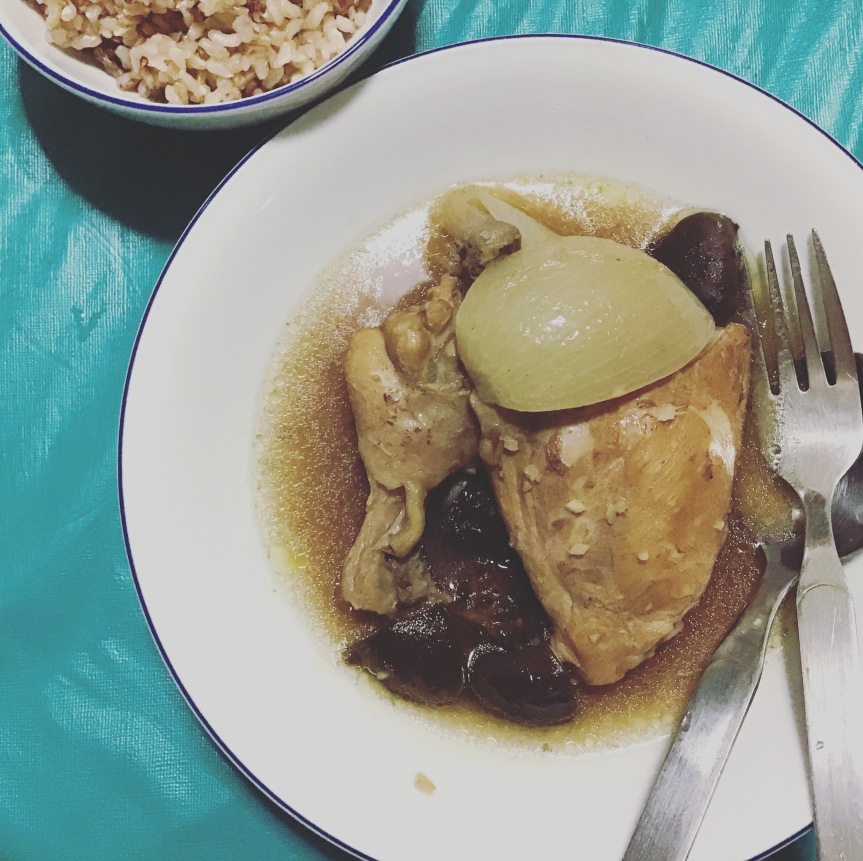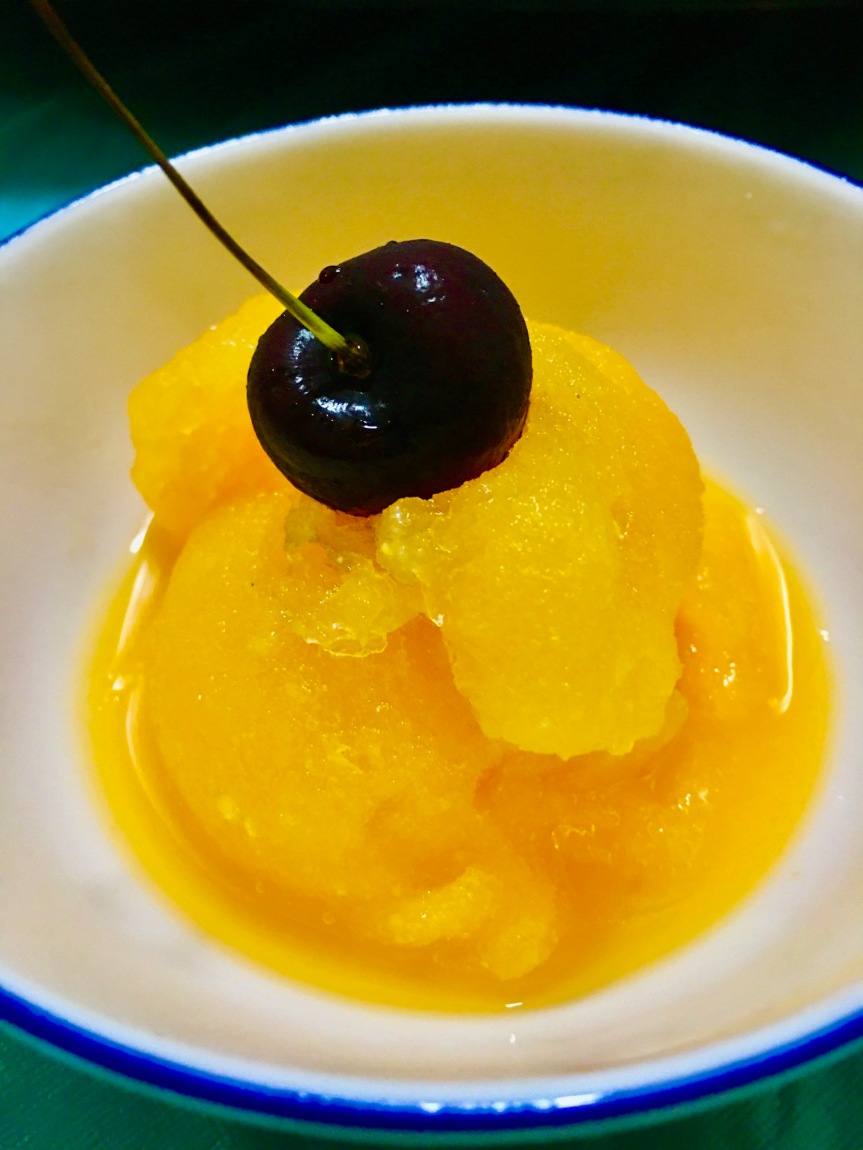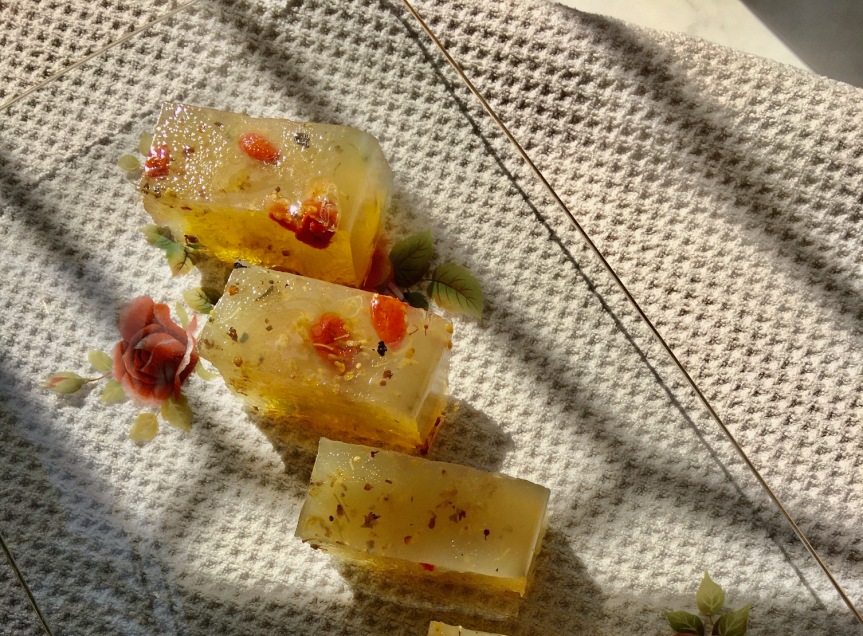
The wine-y smell of this soup takes me back to my childhood. I confess it wasn’t the sort of dish I enjoyed when I was younger. I’m not fond of soups and the smell of this one was an earthy and mysterious liquid garnet that tasted disappointingly like vinegar. I never tried it until today when I made a “lite” version, i.e. skinless chicken, trimmed of excess fat. When I tasted it, I realized I had captured the smell that I remembered in this pot. It was delicious. What can I say? I grew up!
Hakka Chinese Chicken in Wine Soup, Lite Version
Servings: 4
Total Time: 30 minutes
2 chicken thighs, skinless and trimmed of excess fat
2 chicken drumsticks, skinless
1 chicken breast, skinless and boneless
Salt and pepper
2 inch piece of ginger, peeled and minced
1 tablespoon oil
1 cup red wine
1 1/4 cup chicken broth, low sodium preferred
1 small onion (I used quarter of a large onion)
1/2 tablespoon soy sauce
10 small dried shiitake mushrooms, soaked and softened, OR 4 large fresh shiitake mushrooms, stemmed, caps quartered
Scallions, sliced on the bias, for garnish (optional)
In a medium bowl, lightly salt and pepper the chicken pieces. Set aside.
In a large saucepan or small Dutch pot, heat the oil over a medium-high flame. Add the ginger and stir fry until fragrant, about 30 seconds. Add the chicken pieces and stir fry until lightly browned on the outside.
Add the wine and chicken broth. Add the soy sauce, onion, and the mushrooms. Bring to the boil then reduce heat to simmer, about 15 minutes. Remove the chicken breast and set it aside. Continue cooking the thighs and drumsticks for 15 more minutes. Three minutes before cooking time is up, add the breast back to the soup to warm it. Serve at once, ladled into bowls garnished with scallions, if you wish.


 Crystal Osmanthus Flower Jelly with Wolfberries is an agar-gelatin dessert. It is served at New Year because the osmanthus flower, a tiny yellow fragrant flower, is thought to represent good luck, friendship, and success. For centuries the Chinese have been using flowers like these to make fragrant teas and desserts. This dessert also contains wolfberries, also called goji berries, which are considered an antioxidant high in Vitamin A, 8 essential amino acids, and minerals. The Chinese have been using them for thousands of years to make soup-tonics. This dessert is light, slightly sweet, with a tiny sharp clean scent from the chrysanthemum flowers in the tea. It is a bit firmer and “crisper” than desserts made with gelatin on account of the agar. But it is so good for you. So here’s to a healthy 2020! Chaiyo!
Crystal Osmanthus Flower Jelly with Wolfberries is an agar-gelatin dessert. It is served at New Year because the osmanthus flower, a tiny yellow fragrant flower, is thought to represent good luck, friendship, and success. For centuries the Chinese have been using flowers like these to make fragrant teas and desserts. This dessert also contains wolfberries, also called goji berries, which are considered an antioxidant high in Vitamin A, 8 essential amino acids, and minerals. The Chinese have been using them for thousands of years to make soup-tonics. This dessert is light, slightly sweet, with a tiny sharp clean scent from the chrysanthemum flowers in the tea. It is a bit firmer and “crisper” than desserts made with gelatin on account of the agar. But it is so good for you. So here’s to a healthy 2020! Chaiyo!